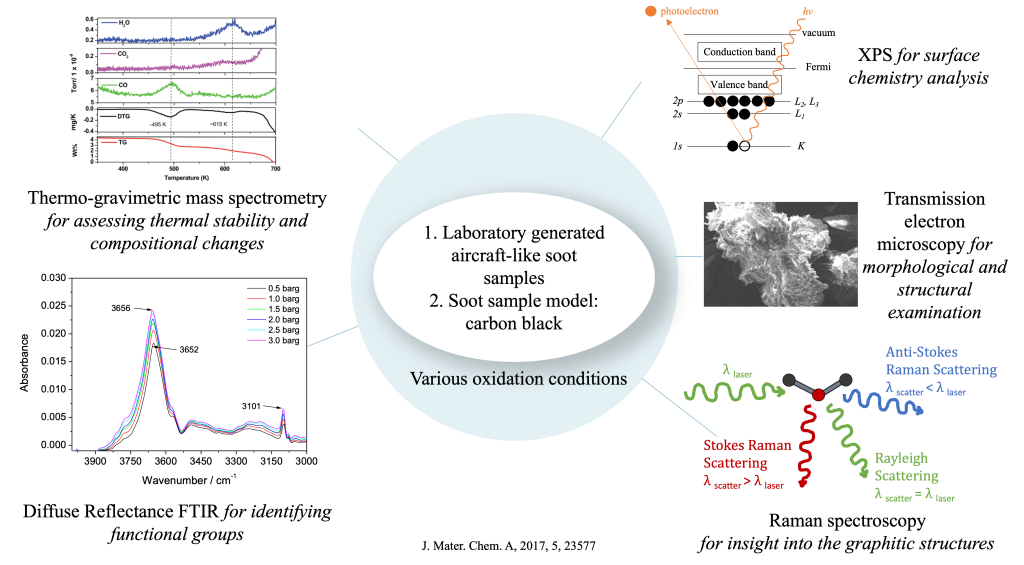Navigation menu
- Education
- Emissions & Air Quality
- Infrastructure & Services
- Meteorology & Climate
- News
- Physical Chemistry
- Projects
Jet engines, the powerhouse behind the aviation industry, are significant contributors to global emissions, impacting both the environment and human health. By combusting fuel to produce thrust for flights, these engines release a mix of carbon dioxide (CO2), water vapor, nitrogen oxides (NOx), volatile organic compounds (VOCs), and soot particles into the atmosphere. Generally, soot particles constitute a relatively small portion of the total emissions by mass, but they are significant because of their impact on air quality and their role in contrail formation (with potential climate change impacts). Hence, characterizing soot particles emitted from jet engines is crucial. Also, during the emission process, gases and vapours such as VOCs and water vapor, can adsorb on the surface of soot particles. Therefore, after characterization, we will investigate the adsorption/desorption mechanisms of organic and water vapors on soot particles, which contributes to a fundamental understanding of the thermodynamic and kinetic mechanisms underpinning soot-vapor partitioning in jet engine exhaust plumes . These are two essential components of my Ph.D. Project at METENIA.

For the preparation of soot samples, we will initiate the process by generating a diverse series of soot and soot surrogate compounds with varying structural and surface characteristics. This will be achieved by oxidizing the particles under carefully controlled oxidation conditions, thus systematically changing the porous structure, carbonaceous structure, and surface chemistry of the samples. This modification aims to mimic the range of soot characteristics encountered in real-world jet engine emissions, thus providing a basis for our analysis. Following the oxidation process, the modified soot particles will undergo a series of detailed measurements to unravel their physical and chemical properties. We will employ several sophisticated analytical techniques, including thermogravimetric mass spectrometry (TG-MS) for assessing thermal stability and compositional changes, diffuse reflectance Fourier- transform infrared spectroscopy (DRIFTS) for identifying functional groups, X-ray photoelectron spectroscopy (XPS) for surface chemistry analysis, transmission electron microscopy (TEM) for morphological and structural examination, and Raman spectroscopy for insight into the graphitic or disordered nature of the carbon structures. Together, these methods will provide a multifaceted understanding of the soot particles.
With all the comprehensive data from the characterization measurements, we can now look into the surface and pores of soot particles to study the adsorption and desorption of vapors, especially VOCs. Beginning with single component adsorption, we will conduct thermodynamic and kinetic analysis. This step is crucial as it enables us to understand the fundamental thermodynamic and kinetic mechanisms governing the adsorption and desorption process of VOCs on soot particles. Through this analysis, we aim to quantify the amount and speed of VOCs adsorbed onto soot particles, a metric that is vital for assessing the potential environmental impact of soot as a carrier or sink for atmospheric pollutants.
1 Kommentar